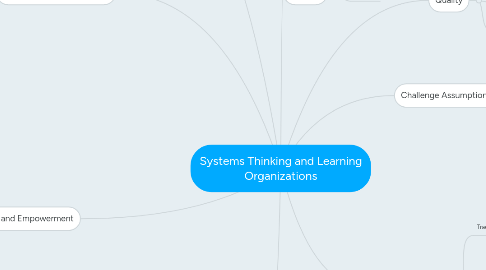
1. Building Products
1.1. every step between your product and your customer separates and potentially muddies learning
1.1.1. what are the steps we can remove???
1.1.1.1. high on the chain?
1.1.1.1.1. plan less work
1.1.1.1.2. allow teams to work together
1.1.1.2. middle of the chain?
1.1.1.2.1. plan with other teams
1.1.1.2.2. across structures
1.1.1.3. lower?
1.1.1.3.1. grow your network, create visuals
1.1.1.3.2. ask for small investments
2. Increase product value flow
2.1. high on chain?
2.1.1. understand how the work works, make flow better
2.2. middle of the chain
2.2.1. enable team, collect meaningful data
2.2.2. plan outcomes, not individuals
2.3. lower
2.3.1. pair
2.3.2. learn more
2.3.3. figure out how you can work together more
2.3.4. learn things you don't know
2.3.5. get broad skills over isolated skills
3. Training and Empowerment
3.1. often sent to training but not given the resources or empowered to actually do the things they learned
3.2. what can you do?
3.2.1. High on chain?
3.2.1.1. drive curiosity, not training
3.2.1.2. alignment
3.2.1.3. continue learning
3.2.2. Middle
3.2.2.1. help train, then step back
3.2.2.2. celebrate learning
3.2.2.3. continue learning
3.2.3. lower
3.2.3.1. always look for ways to learn
4. "It's not necessary to change. Survival is not mandatory."
4.1. - W. Edwards Deming
5. Challenge Assumptions
5.1. Double loop learning
5.1.1. single loop learning checks the result and updates the strategies and techniques
5.1.2. double loop more than fixes the problem, it challenges and updates the assumptions, values and beliefs behind what we do
5.2. architect testing antidote
6. Speaker
6.1. Joel Tosi
7. Quality
7.1. Quality is determined by the outcome
7.1.1. by the people using the systems
7.1.2. need feedback from those people to find out if it's quality
7.2. Deming
7.2.1. quality = result of work efforts / (divided) / total costs
8. Business Structure
8.1. Traditional Org Chart
8.1.1. Built around expecting to fail
8.1.1.1. promote people best at figuring out failures and fixing them
8.1.2. Building a product touches all the parts across the organization
8.1.2.1. so not really organized at all at that point
8.2. Information Structure
8.2.1. whoever knows whoever, works together to find whoever that can get this thing done
8.2.2. this constantly battles traditional org chart, even within the constructs of the org chart
8.3. Value Creation Structure
8.3.1. Groups that deliver value separate from eachother
8.3.2. Move security folks onto the team instead of buying more servers, and hireing more people
8.3.2.1. challenge assumptions
